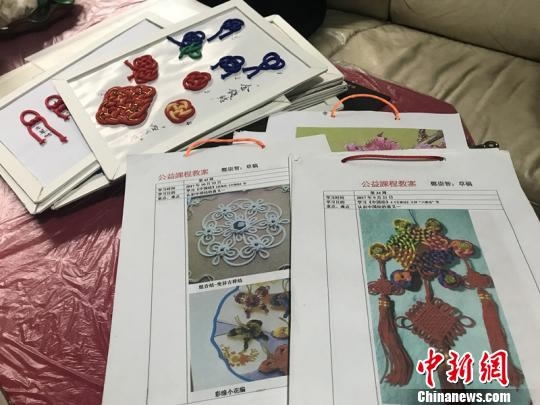
China
15:49, 30-Dec-2017
Octogenarian passes on the art of Chinese knotting
CGTN

Can knots be a form of art? It is in China. Zheng Chongzhi, an 83-year-old man obsessed with traditional Chinese craftsmanship has made it easier for others to learn how to learn the art by compiling two instructional books in the past three years.
Chinese knotting has been an ancient folk art for thousands of years and involves tying and weaving a single length of cord or rope into a variety of shapes. Knot, or "jie" in Chinese, means vigor, harmony, and unification. In the beginning, knots were worn as an accessory and later, used to decorate houses.

The textbooks compiled by Zheng Chongzhi. /CNS Photo
The textbooks compiled by Zheng Chongzhi. /CNS Photo
Zheng learned knotting from his grandmother and in an effort to pass on his knowledge, began teaching others how to make Chinese knots. He started his teaching career in 1999, as a volunteer at a local community university.
Zheng was concerned about the passive impact of industrial production on folk handicraft. “Traditional culture should be passed down and carried forward. I had a responsibility to keep the knotting skill alive and continue to intrigue people,” Zheng said.

The textbook made of red Chinese knots compiled by Zheng Chongzhi. /CNS Photo
The textbook made of red Chinese knots compiled by Zheng Chongzhi. /CNS Photo
In an attempt to better teach his students, Zheng began to write textbooks documenting the techniques in 2014 and completed a total of two volumes this year. Among the two books, one was hand-drawn, and the other actually included physical knots pasted on paper, with detailed steps next to them.
Zhang Bo, one of Zheng's students, told Chinanews that he wanted to learn Chinese knotting to find quietude. “The fast pace of social life makes me feel impetuous sometimes, but when tying knots, I can calm down and become more patient,” Zhang said.
“Chinese knot has unique charm. A very simple rope, through weaving, a thousand shapes can be made,” Zheng said. Even though he knows thousands of different weaving methods, he is still exploring.

SITEMAP
Copyright © 2018 CGTN. Beijing ICP prepared NO.16065310-3
Copyright © 2018 CGTN. Beijing ICP prepared NO.16065310-3